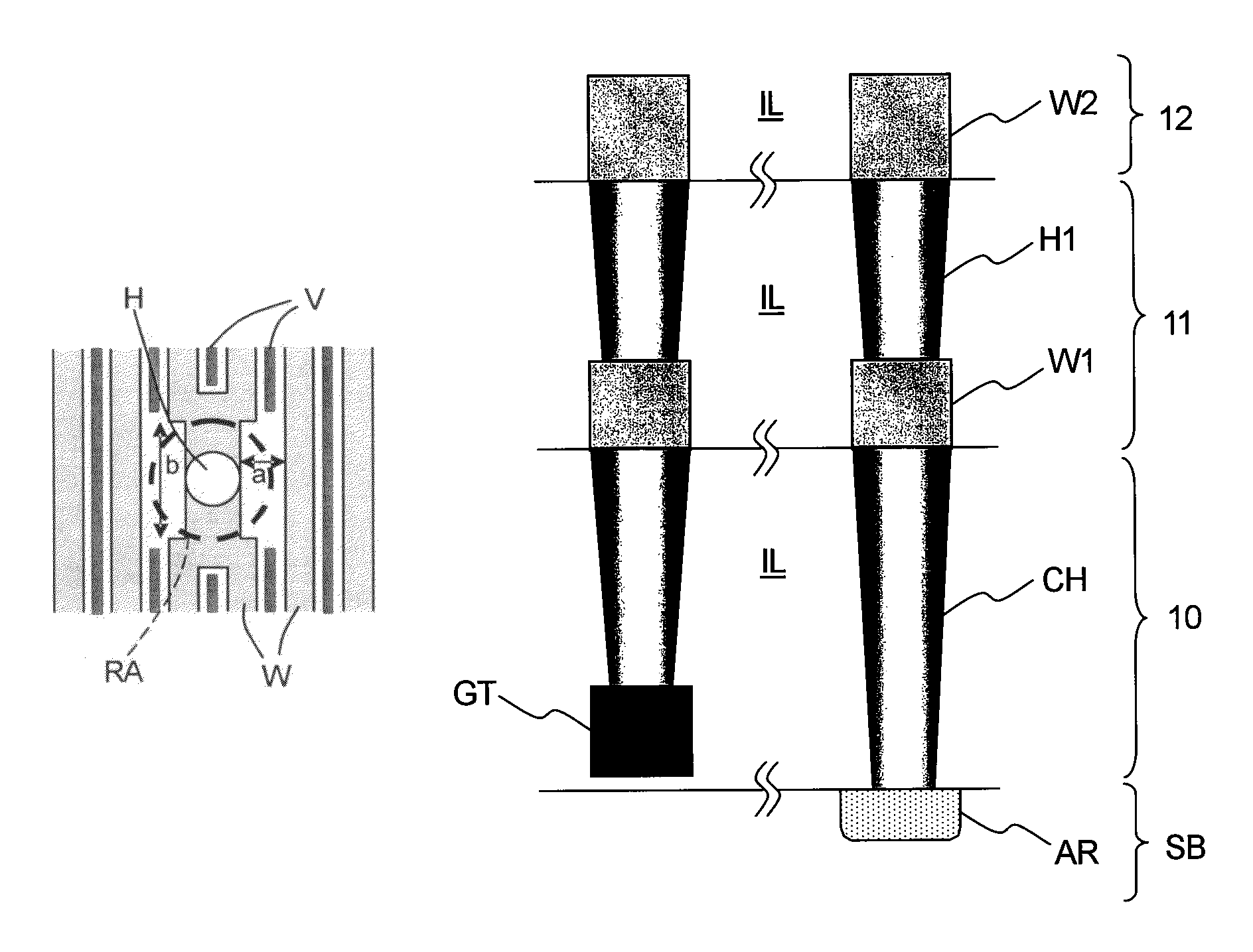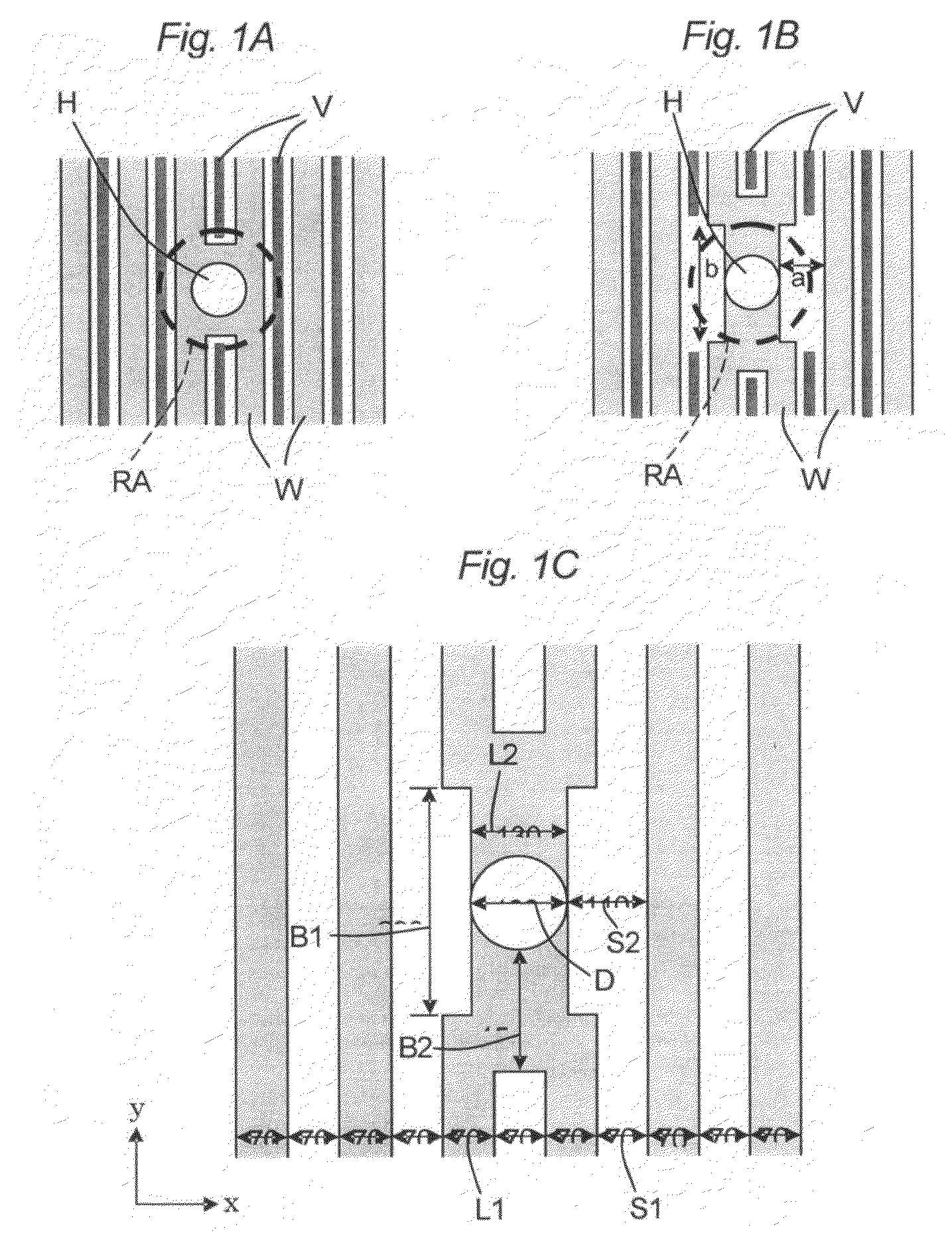Semiconductor device for preventing voids in the contact region and method of forming the same
a technology of semiconductor devices and contact regions, which is applied in the direction of semiconductor devices, semiconductor/solid-state device details, electrical devices, etc., can solve the problems of easy contact with voids, invading metal materials, and sometimes displaced via holes h from the center of contact regions, so as to achieve high reliability and high yield of semiconductor devices
- Summary
- Abstract
- Description
- Claims
- Application Information
AI Technical Summary
Benefits of technology
Problems solved by technology
Method used
Image
Examples
embodiment 1
[0032]FIG. 1A is a plan view showing an example of layout of a conventional interconnection pattern as a comparative example. FIG. 1B is a plan view showing an example of layout of an interconnection pattern according to an embodiment of the invention, and FIG. 1C is an enlarged view of FIG. 1B.
[0033]Hereinafter, layout of the interconnection pattern in a flash memory will be explained by way of example, the invention can be applied to various kinds of semiconductor integrated circuits, such as DRAM, SRAM, ROM and SoC.
[0034]Since semiconductor integrated circuits generally have a plurality of interconnection layers, with the lowermost interconnection layer nearest to a semiconductor substrate having the highest interconnection density, the most critical dimensional and positional accuracy are required for the lowermost interconnection layer. An interlayer insulation film is embedded in between the lower interconnection layer and the upper interconnection layer, and a via hole H is f...
embodiment 2
[0066]FIGS. 6A to 6F are plan views showing various examples of layouts of interconnection patterns in the contact region and adjacent regions thereof according to the invention. First, in FIG. 6A, the shape of the notch in the contact region to which the via hole H is connected is the same as that of FIG. 1B, whereas the joint portion of the two interconnection lines W for forming the contact region is longer than that of FIG. 1B.
[0067]In FIG. 6B, the shape of the notch in the contact region to which the via hole H is connected is the same as that of FIG. 1B, whereas two or more interconnection lines W adjacent to the contact region are joined to each other, in which other notches are provided so as to face the notches in the contact region, respectively.
[0068]In FIG. 6C, two or more interconnection lines W adjacent to the contact region to which the via hole H is connected are joined to each other, and the contact region is not provided with any notches but the adjacent interconne...
PUM
 Login to View More
Login to View More Abstract
Description
Claims
Application Information
 Login to View More
Login to View More - R&D
- Intellectual Property
- Life Sciences
- Materials
- Tech Scout
- Unparalleled Data Quality
- Higher Quality Content
- 60% Fewer Hallucinations
Browse by: Latest US Patents, China's latest patents, Technical Efficacy Thesaurus, Application Domain, Technology Topic, Popular Technical Reports.
© 2025 PatSnap. All rights reserved.Legal|Privacy policy|Modern Slavery Act Transparency Statement|Sitemap|About US| Contact US: help@patsnap.com



